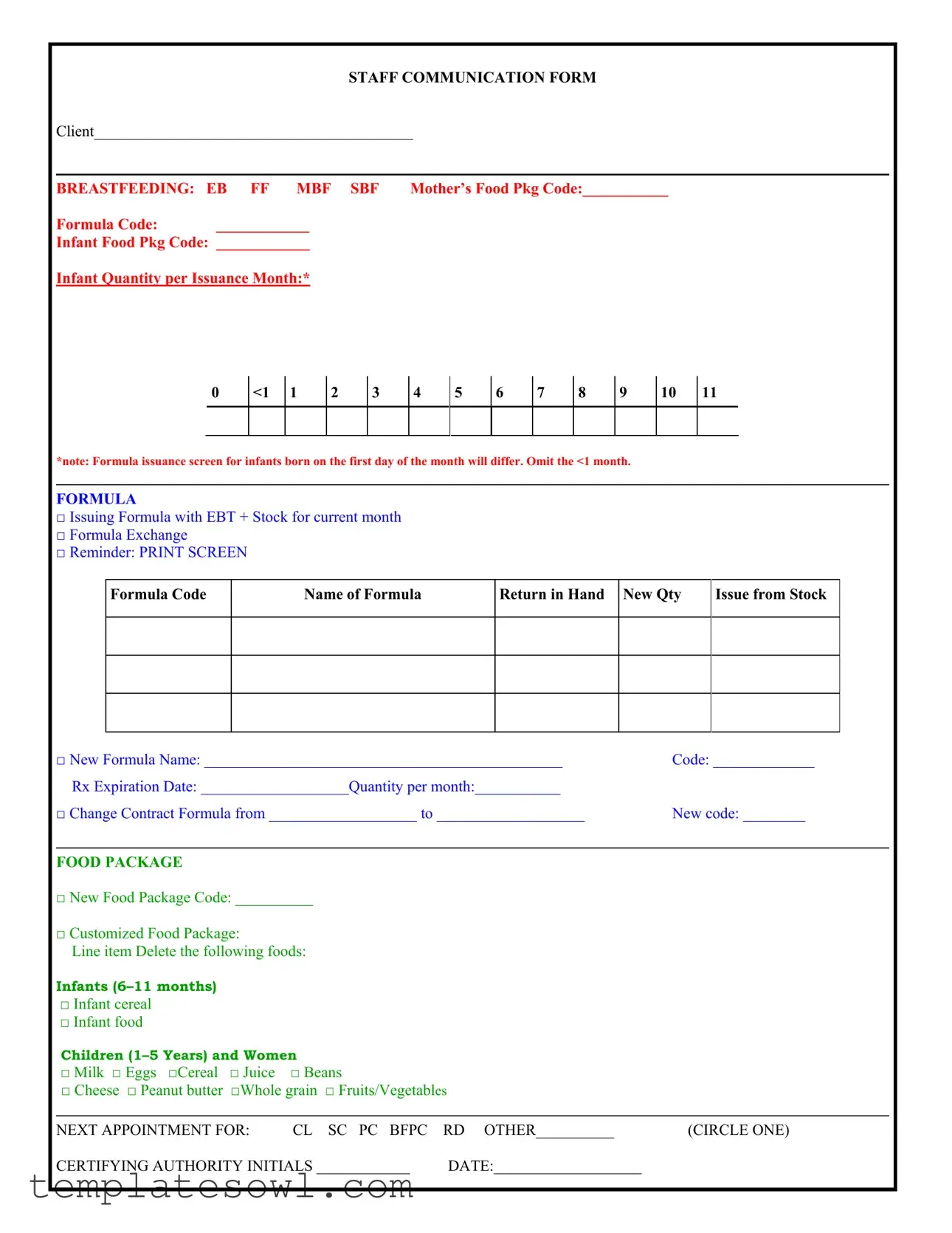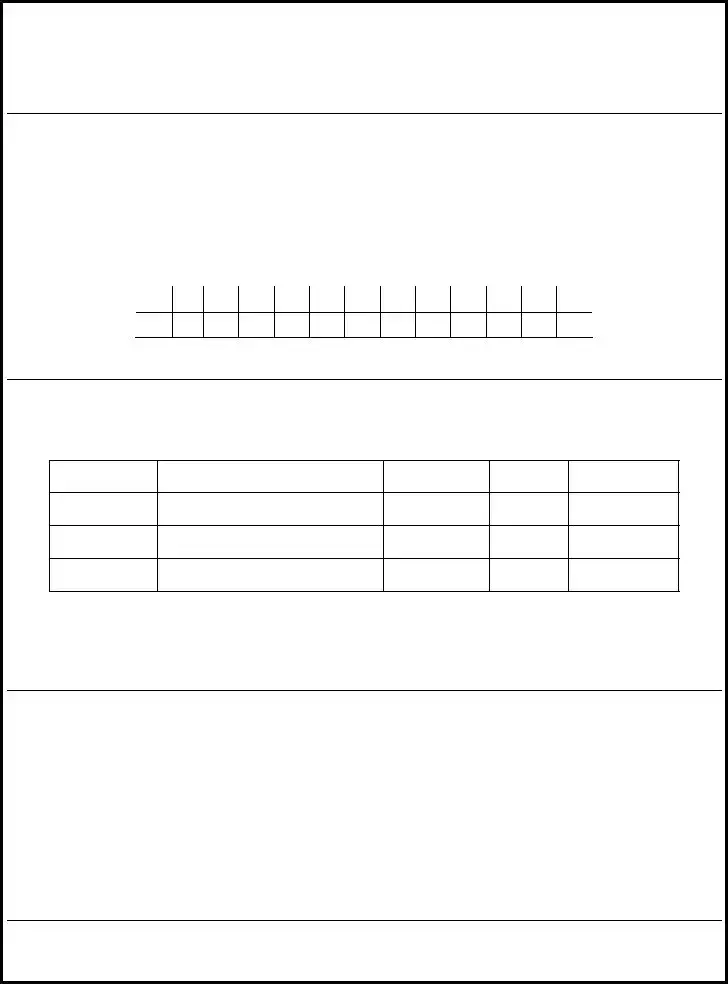What is the purpose of the Staff Communication form?
The Staff Communication form facilitates communication between staff members regarding the issuance of breastfeeding supplies, infant foods, and food packages. It ensures that all necessary details are captured for effective inventory management and client support.
Who should fill out the Staff Communication form?
This form should be filled out by authorized staff members who handle food package distributions and breastfeeding support. It is essential for ensuring accurate records are maintained for all clients.
What information do I need to provide on the form?
Required information includes client details, mother’s food package code, formula codes, infant food package codes, and the quantity of items to be issued. Additional information on formula exchanges or changes in food packages should also be included.
How do I note a formula exchange on the form?
To note a formula exchange, check the box for "Formula Exchange." Fill in the original formula name, code, return quantity, and the details for the new formula, including its name and code.
What should I do if the infant was born on the first day of the month?
If the infant was born on the first day of the month, skip the option for infants younger than one month on the formula issuance. Ensure to follow the specific guidelines for formula issuance for this scenario.
Can I customize food packages using this form?
Yes, you can create a customized food package. Enter the new food package code or delete specific food items by checking the corresponding boxes for the items to be removed from the package.
What do I need to certify on the form?
The certifying authority must initial the form to confirm that all information is accurate and complete. The date of certification should also be recorded in the designated space.
What is the process for indicating the next appointment on the form?
In the section for the next appointment, circle the type of appointment that applies: CL, SC, PC, BFPC, RD, or OTHER. This helps to schedule future follow-ups efficiently.
What if I make a mistake while filling out the form?
Correct any mistakes by crossing out the incorrect information with a single line. Do not use correction fluid. Ensure that the corrected information is legible, and initial next to any changes to maintain clarity.
How can I ensure confidentiality while handling this form?
Always handle the form in a secure area to protect client information. When not in use, store forms in locked cabinets. Discuss any client information only with authorized personnel in private settings.

